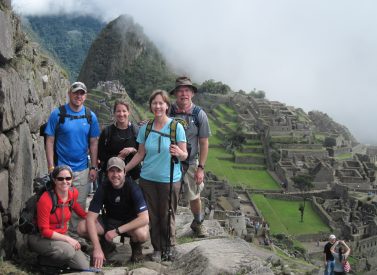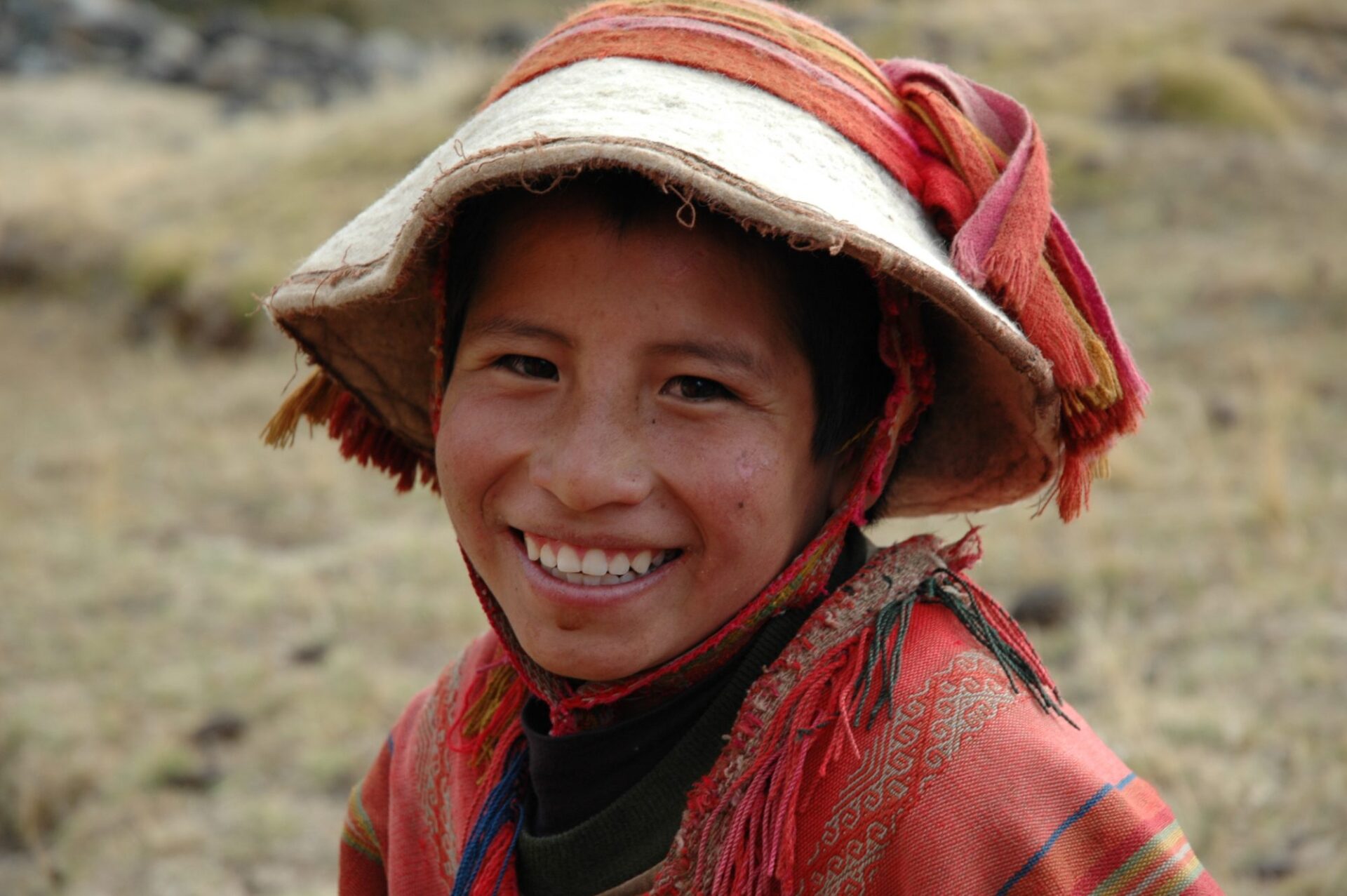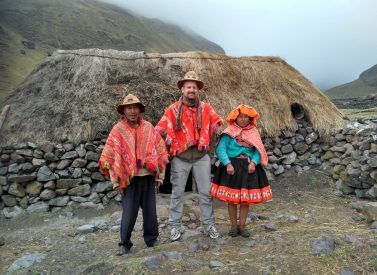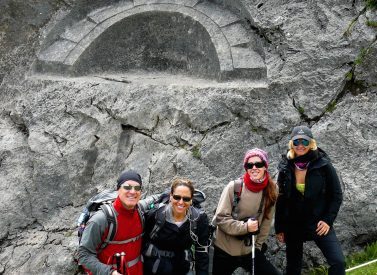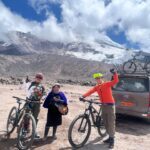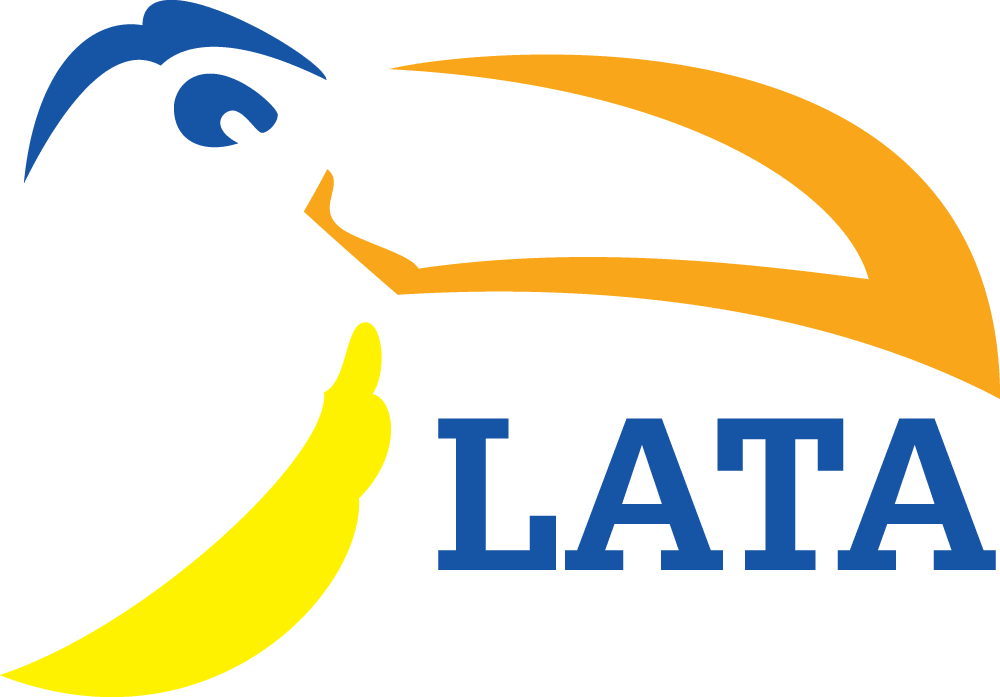
Salkantay 5-day Trek
The Salkantay trek is one of the best alternative hikes to Machu Picchu.
The 5-day Salkantay trail takes you up close to the glistening, ice-clad flanks of Salkantay before descending through orchid-rich cloud forest.
The Salkantay trek is a beautiful though at times tough walk, and a truly rewarding way to reach the Inca capital of Machu Picchu.
More about Salkantay trek
We experience an impressive sweep of altitudes from the 4,600m/15,092ft pass down to 2,000m/6,562ft of sub-tropical jungle buzzing with humming birds.
We visit the stunning ruins of Llactapacta, trekking an old Inca Trail, and from here get our first view over to Machu Picchu.
After a night in Aguas Calientes, we enjoy a tour of the famous Machu Picchu ruins before heading back to Cusco.
A true Andean odyssey, this trek through the dramatic Cordillera Vilcabamba offers a wonderful alternative for those who want to take a less-travelled and beautiful route to Machu Picchu.
Please note: You must be well acclimatised before starting this trek – ie a minimum of 3 nights in Cusco (or higher).
Trip Highlights
Print Share Download as PDF-
Alternative trek to Machu Picchu ruins.
-
High mountain trek gets you close to the glaciers of Salkantay.
-
Experience a variety of eco-systems from high passes to sub-tropical jungle.
-
Wonderful first view of Machu Picchu from Llactapata.
The Salkantay trek was definitely one of the highlights! We barely saw anyone for the first 3 days so we really felt like we were on an adventure.
T. McGrath, Salkantay
Full Itinerary
Day 1:Cusco – Challacancha – Soraypampa – Humantay Lake (B, L, D)
On the first day we leave Cusco early. We stop in sub-tropical Mollepata for an optional breakfast before driving onwards to our starting point at Challacancha.
We start with a 3-hour walk to Sorayapampa (3,900m/12,795ft) where we will spend our first night. You’ll see the large, white, ice-clad head and shoulders of Salkantay up ahead.
After lunch and a short rest, we will hike up to dazzling turquoise Humantay Lake 4,200m/13,780ft. The 3km trip takes about three hours as we take things slowly at this altitude.
The Sky camp has a dining hut, toilets and cold shower, and spacious 2-person domes, set in the valley at the foot of towering Salkantay (6,271m/20,574ft). Warming soups and meals will be served, and washed down with steaming hot drinks.
Distance to walk: 10 km/6.21 miles
Walking time: 5-6 hours
Starting altitude: 3,800m/12,467ft
Highest point: 4,200m/13,780ft
Campsite altitude: 3,900m/12,795ft
Day 2: Soraypampa - Salkantay Pass - Huayracmachay - Collpapampa (B, L, D)
In the morning, you will wake up with the early morning sun and enjoy an energizing coca tea. This is followed by a hearty breakfast, before embarking on the 7 km / approximately three-hour trek to the highest point on the route, the Salkantay Pass (4,630 m / 15,190 ft). It is a difficult, winding ascent along the “path of the 7 snakes”.
From the top, you will have a magnificent view over the surrounding valleys and the Salkantay mountain right in front of you (6,271 m / 20,574 ft). You will also be able to take in Humantay, Tucarhuay, and Pumasillo mountains. After a rest we will start our descent (7 km / 4.35 mi) to Huayracmachay (3,850 m / 12,631 ft) where we stop for lunch. This is a steep, rocky section but has amazing views of the surrounding valley.
After a filling lunch, you will walk into the fringes of the cloud forest. This part of the walk takes about 3 hours and covers a distance of 9.5 km / 5.9 m. Along the way, you can appreciate the verdant rainforest and notice the striking changes in scenery from the Andes to the Amazon. You will observe colourful landscapes, fauna, and native plants and feel the air warm up.
After a long day’s hike, we arrive at Collpapampa for the night. Finally, you will be served a very well-earned dinner before resting in your 2-person hut at the Sky View campsite.
Distance to walk: 23.5 km/14.6 miles
Walking time: 10-11 hours
Minimum altitude: 2,900m/9,514ft
Highest point: 4,630m/15,190ft
Campsite altitude: 2,950m/9,678ft
Day 3: Collpapampa - La Playa - Lucmabamba - Jungle Domes (B,L,D)
Today you’ll be up at 6:00 a.m. for your tea and breakfast before leaving the campsite and heading for La Playa. We walk through Santa Teresa Valley – a more leisurely walk today with more downs than ups as you enjoy in the lush landscape of rivers, waterfalls, orchids, and plantations.
We’ll pass through a small village called Collpapampa, and after, descend through a valley where you’ll see waterfalls, birds, hot springs, fruit trees, and plenty of flora and fauna.
We’ll have lunch in La Playa, before heading to Lucmabamba (2,000 m / 6,562 ft), an hour away.
In the afternoon, you will have free time to explore the tropical surroundings and visit an organic coffee farm, idea coffee lovers. You can also visit avocado and orange plantations.
Accommodation tonight will be in a 2-person Jungle Dome.
Distance to walk: 18km/11.18 miles
Walking time: 5-6 hours
Lowest altitude: 2,000m/6,562ft
Highest point: 2,883m/9,459ft
Campsite altitude: 2,000m/6,562ft
Day 4: Lucmabamba - Llactapata - Hidroeléctrica - Aguas Calientes (B, L D)
After re-fuelling at breakfast, put on your hiking boots for your last day of trekking!
This morning, we’ll walk along a stretch of the original Inca Trail. After a 2-hour uphill climb and amazing views over the Santa Teresa Valley, we’ll reach Llactapata (2,700 m / 8,858 ft), an Inca archaeological site right in front of Machu Picchu. You even get a view of Machu Picchu and Huayna Picchu from here.
Afterward, we’ll walk downhill for 1:30 hours. Along the way, we stop for lunch in Aobamba before we continue, for half an hour to Hidroeléctrica (1,800 m / 5,906 ft). One of the most impressive sites in this section is the 250-meter-tall artificial waterfall, which generates electricity for the entire city of Cusco.
At the hydroelectric plant, we catch the train (45 minutes), or if the group wishes, we can walk to Aguas Calientes along the train tracks (2-3 hours), a rewarding and interesting walk.
Once in the small town, we’ll have dinner at a restaurant and spend the night in a hotel.
Distance to walk: 25km/15.53 miles
Walking time: 8-9 hours
Lowest altitude: 1,800m/5,906ft
Highest point: 2,800m/9,186ft
Accommodation altitude: 2,040m/6,693ft
Day 5: Aguas Calientes - Machu Picchu guided tour- Ollantaytambo – Cusco (B)
On the final day of our expedition, we visit Machu Picchu. We take an early bus to the site where we will have a guided tour of approximately 2 hours.
You will then have time to explore the mysterious remains on your own before returning to Aguas Calientes for lunch and the late afternoon or evening train to Ollantaytambo and bus to Cusco. Our private bus will collect you from the station and drive you back to your hotel in Cusco at around 8 pm. You can now put your feet up and enjoy a well-deserved rest at your hotel.
Optional: you can choose to go to Huayna Picchu Mountain (2,720 m / 8,924 ft) or Machu Picchu Mountain (3,000 m / 9,843 ft); these tours will take you 2 and 3 hours up and down, respectively (tickets must be booked in advance).
Machu Picchu altitude: 3,000m/9,843
Prices From $812 / £660 per person
What's Included?
Permits & entrance tickets, entrance to the Salkantay Sanctuary, entry to Machu Picchu Archaeological Site (Circuit 2), experienced and certified English-speaking tour guide, duffle bag for the trek to hold your personal belongings up to a maximum weight of 7 kg / 15.4 lb (this weight includes your sleeping bag), medical kit/first aid kit, protective cover for backpack on the trail, rain poncho, accommodation in private campsites, 1 night’s hotel in Aguas Calientes, 5 breakfasts, 4 lunches, and 4 dinners, hot drinks and snacks, water on the trail, daily snacks on the trail, one cloth snack bag, transport from your hotel to trek starting point, round trip bus ticket from Agus Calientes to Machu Picchu, train ticket from Aguas Calientes to Ollantaytambo (Day 5) PeruRail Expedition Service, train from Hidroelectrica to Aguas Calientes(can be taken out, US$ 35.00 per person), transport from Ollantaytambo train station to your hotel in Cusco (hotel not included)
What's Not Included?
Sleeping bag (US$ 20 per person to rent), trekking poles (US$ 15 per person to rent), Huayna Picchu Mountain permit (US$ 65 per person), Day 5: lunch in Aguas Calientes and dinner in Cusco, personal hiking clothing and gear, travel insurance, tips for staff, additional costs or delays beyond our control, any flights
Accommodation
2-person huts or domes with dining room and toilet hut, plus one night hotel in Aguas Calientes.
Tour Staff
All our official tour guides speak English and Spanish and are professionally trained and certified.
Cooks, mule drivers and additional staff are all from the local, nearby communities and we have worked with them for a long time.
Meals
Vegetarians, vegans and other dietary requirements are catered for without a problem. Please let us know in advance of any requirements you have.
You wake early to a cup of hot coca tea. Breakfast is served in a dining hut, and consists of hot drinks, porridge, toast, jams and bread, and your guide will explain the day’s trekking plans.
Lunch can feature soups, meats, salads and fish, with vegetarian options and hot drinks too.
Every day your tour guide will provide you with snacks for the trails ranging from local fruits, cookies, chocolate, caramels, etc.
Before dinner hot drinks, popcorn and other snacks are served to help you recover energy.
Dinner will feature pasta, mashed potatoes, meat, fish or vegetarian options, followed by hot drinks and a pudding.
Activity Level
We have classified this as a moderate-challenging trek, and you need to be in good physical shape for it.
You hike 5-11 hours a day on 4 consecutive days, over rugged mountain trails at elevation.
There is a high altitude pass to cross at 4,572m/15,000ft before dropping into lower elevations en route to Machu Picchu.
Pre-trip preparation should include challenging cardiovascular exercise (including regular hikes on varied terrain) and a healthy, balanced diet.
Well-worn hiking boots and additional acclimatisation nights in Cusco (3-4) before the trek are both highly recommended.
All guests are encouraged to hike at their own pace, taking breaks whenever needed, to ensure a successful and enjoyable trek for all.
Most people go to bed fairly early after a long day trekking, to recover energy for the morning.
Practical Information
Introduction to Peru
Peru is the perfect holiday destination for adventure travellers that want an amazing variety of activity, geography and cultural travel experiences.
The breadth of travel experiences in Peru is breathtaking – from trekking in the Andes to Machu Picchu to the tropical jungle of the Amazon, and plenty in between.
The people of Peru make it a special destination too, with its colourful and traditional street life and friendly locals.
Geography of Peru
Peru is made up of 3 distinct geographical areas: the coast, the mountains and the jungle.
The costa or coastal region is a narrow ribbon of desert 2,250 km long, crossed by fertile river valleys flowing from the Andes. It takes up 11% of the country and holds more than 40% of the population.
The cold Humboldt current gives rise to a blanket of mist – the garua – which hangs above coastal cities like the capital Lima from May to November.
Heading east, you’re soon climbing above the garua and into the Andes. The sierra, or mountainous region, covers some 25% of Peru’s territory and contains 50% of the population. The sierra inhabitants are mainly Indigenous or Mestizo, and many still speak Quechua or Aymara.
The sierra contains dozens of 6,000-metre snow peaks and volcanoes, including Huascaran (6,768m) the highest mountain in the tropics. The deep valley basins contain most of the towns and arable land; the terracing and canal systems of the Incas and pre-Incas are often still used today.
The eastern Andes are heavily forested up to 3,350m and sweep down into the Amazon Basin.
Peru’s selva or jungle makes up almost two thirds of the country’s area, but holds only about 6% of the population: the only towns with significant populations are Iquitos and Pucallpa.
Weather in Peru
You can also read about the weather of Peru in our blog.
Peru is located in the southern tropics (latitudes 0º to 18º), but climate varies significantly according to season, altitude and region.
Lima & the coast
From May to October, Lima is often overcast, but with minimal precipitation. There are sunny spells, and it’s a fresh to pleasant 13-20ºC.
At the same time, inland areas and the north coast mid to high 20’s ºC.
November to April is generally warm and sunny and Lima enjoys warm temperature of 19-25ºC, with the coast averaging 22-30ºC.
The Andes
Climate depends largely on altitude. As a rule of thumb, below 2,000m climate is mild and above 2,000m warm clothing is required for evenings, nights and early mornings.
The Andean sun is very strong.
May to Oct (dry season in The Andes)
Cusco (3,300m): Average max/min temps: 22ºC /2ºC. Average 3 or 4 wet days per month.
Arequipa (2,380m): Average max/min temps: 26ºC /9ºC. Sunny more than 340 days/year with minimal precipitation.
On highland treks: Conditions are generally dry. However, at this time of year, expect a range of conditions within a single day: cold/freezing nights at camps above 4,000m, where pre-dawn temperatures can be -5ºC; warm, spring-like mornings and afternoons; and cold evenings.
Note that mountain weather can be fickle and localised, and that precipitation is not unknown in the dry season. Expect temperatures to swing between sun and shade, sheltered and exposed ground and with altitude gain and loss. A quick-setting sun means temperatures drop fast.
In the cloud forest, e.g. around Machu Picchu, daytime conditions are generally warm or hot, and evenings cool.
Nov to March/April (wet season in The Andes)
Cusco: Average max/min temps: 23ºC /6ºC. Average 13 wet days per month.
Arequipa: Average max/min temps: 25ºC /14ºC.
On highland treks: Wetter conditions, with cooler days and milder nights than dry season. Jan-Mar usually the wettest months.
The Amazon rainforest
Year-round, weather conditions are hot and humid and there is always the risk of rain
There is a ‘dry season’ in Tambopata and Manu between May and October. The average daytime high temperature is between 25°C and 34°C and the average nighttime low is between 16°C and 22°C. Heavy downpours typically occur every few days.
Around 80% of annual average rainfall – approx 2,000 mm in Manu and Tambopata and 1,400 mm in Iquitos – occurs in the wet season Nov-April.
On rare occasions, between May and September, cold fronts from Argentina – ‘friajes’ – can sweep into southwest Amazonia and push temperatures down to 9° C. (Friajes usually last between 1 and 3 days).
Kit list
Good kit is vital for every trip.
Book with Andean Trails and get 15% off Páramo’s fantastic ethical and high performance outdoor gear.
Overview
When planning for the climatic conditions encountered in the High Andes, layering is the most practical and versatile clothing system. It’s worth remembering that our clothing keeps us warm by retaining and isolating the heat we ourselves create.
To best maintain body heat, several layers of lightweight, warm and quick-drying clothing are far more efficient than one or two thick layers. Layers should have the following qualities:
- Breathability (able to wick away the humidity produced by sweat):
- Isolation (able to keep in the warm air our body produces); and
- Impermeability (able to impede the passing of wind and water).
First (base) layer: This layer wicks the sweat away from our skin, thus helping keep the body dry and warm. To this end, synthetic fabrics such as polypropylene should be used.
Mid layers: These isloating layers should also be synthetic (e.g. the known polar linings such as polartec or windblock, which are light and insulate twice as well as wool). Very important layers for retaining body heat.
Outer layer / shell: Finally, the vital layer which protects us from climatic adversities. A breathable, wind-proof and waterproof anorak, such as Goretex.
Give plenty of thought to kit selection, and try to keep weight down.
We provide thermarests on the trek but you have to bring (or RENT, please ask) a sleeping bag (-5ºC).
We also carry an extensive first aid kit & oxygen on all trips, but these are generally for emergencies only.
Below is a more detailed guide.
Detailed kit list
- 2 pairs synthetic inner socks (e.g. polypropylene, thermastat, coolmax) and 2 pairs thick loop-stitch/wool socks for cold.
- Trekking boots – should be well broken-in, waterproof and provide good ankle support.
- Trainers/sandals for city-wear, evenings at lower camps & river crossings.
- Base layer leggings (1 pair).
- Thick fleece leggings (or salopettes) (1 pair).
- Goretex-type over-trousers (or salopettes) (1 pair).
- Trekking trousers (2 pairs).
- Shorts – wear sparingly in early stages at altitude, as sun burns.
- Thermal base layer shirts (2).
- Microfleece mid-layer shirt (1).
- Shirt/t-shirt 1 or 2 for lower altitudes. Long-sleeved, collared shirt protects against sun
- Fleece jacket or similar (1).
- Warm jacket (down or synthetic). For camp and upper slopes.
- Waterproof Goretex-type jacket.
- Broad-brimmed sunhat, essential.
- Warm hat, fleece or wool. (N.B. Up to 30% of body heat can be lost through the head).
- Sunglasses with UV filter.
- Scarf for cold.
- Bandanna – to protect neck from strong sun.
- Light inner gloves
- Warm gloves, e.g. fleece, and outer waterproof gloves or mittens (1 pair)
- Mittens allow you to keep the fingers together, and better conserve heat (though they also make it difficult to perform certain tasks).
- Daypack (at least 30 litres). Comfortable and with waterproof lining or cover.
- Pair of telescopic trekking poles (optional, can be rented, please ask). Note: You must have rubber tips on your poles.
- Duffel bag or large rucksack for extra clothing, carried by horse/mule/porter while you are trekking.
- Water bottle (2 litres approx.) & purification tablets.
- Personal first-aid kit to include: painkillers, plasters (band-aids), moleskin, anti-biotic cream, general antibiotics (ask your GP), after-bite (tiger balm), anti-diarrhoea tablets, throat lozenges, re-hydration salts & personal medication.
- Insect repellent.
- Towel & wash-kit.
- Wet Wipes/antiseptic hand-wash cream.
- Sunscreen (factor 30+) and lip salve.
- Head-lamp (plus spare bulb and batteries).
- Penknife.
- Travel alarm clock.
- Plastic bags – ‘Zip-loc’ & tough bin liners.
- Camera and film / memory cards (take at least twice the amount you think you will need!).
- Book, e-book, mp3 player/ipod or other for free time.
- Binoculars.
- Spanish/English phrasebook.
- Extra snacks i.e. cereal bars or favourite chocolate bars.
All other non-personal trekking camping gear e.g. tents, cutlery etc is provided.
Miscellaneous others
- Money belt.
- Passport.
- U.S. dollars cash, mixed-denomination notes, undamaged and unmarked.
- ATM cash/credit card.
- Any inoculation certificates.
- Personal & medical insurance certificates.
- Presents e.g. Postcards from home.
- Comfortable clothes for travel, smart clothes for night life.
ATOL holiday protection
Andean Trails has 25 years of experience of putting together the best South America holidays.
We pay a fee to the CAA for every licensable passenger we book since we hold an Air Travel Organiser’s Licence granted by the Civil Aviation Authority. In the unlikely event of our insolvency, the CAA will ensure that you are not stranded abroad and will arrange to refund any money you have paid to us for an advance booking.
We also offer ATOL (Civil Aviation Authority) protected holidays to give our customers peace of mind when booking and travelling.
When you buy an ATOL protected air holiday package from Andean Trails Ltd you will receive a Confirmation Invoice from us confirming your arrangements and your protection under our Air Travel Organiser’s Licence number 6275.
You can read more about ATOL, who is covered and what protections you have if not ATOL-covered, on our ATOL page.
What is ATOL?
The CAA’s ATOL scheme offers protection to your money and your holiday if you book with us. Not everybody is covered (see ‘Who is covered?’ for more), as you must purchase an ‘air package holiday’ with Andean Trails to be protected.
And ‘air package holiday’ is defined as including a flight and some ground services (hotel, transfer, trek etc). This is also known as an ‘ATOL-protected holiday’.
Who is covered?
To be covered by ATOL, you must book a flight and some ground services with us and be from the UK. If you are from the UK and only book ground services and no flights, you are not covered by ATOL (see below for more on how non-ATOL clients are covered).
If you are outside the UK and buy flights with us, you will be ATOL protected IF any of the flights booked with Andean Trails touches/stops in the UK at any point during your holiday package booked with us.
If you buy your flights elsewhere, please check with that agent if you are ATOL protected. Be careful with online flight purchases and make sure you know what protection you have, if any, before paying for flights.
Not all holiday or travel services offered and sold by us will be protected by the ATOL scheme. Please ask us to confirm what protection may apply to your booking.
For land only holidays not involving any air travel, in accordance with “The Package Travel, Package Holidays and Package Tours Regulations 1992”, all UK passengers booking with Andean Trails Ltd. are fully protected for the initial deposit and subsequently the balance of all money paid to us, arising from cancellation or curtailment of travel arrangements due to the insolvency of Andean Trails.
I’m not ATOL covered, what protection do I have?
If you are not ATOL covered, any payments you make to us go to a Trust account.
We can only access this money once your tour has been completed, meaning that if anything happens to Andean Trails Limited while you are on holiday, then your money is secure and you can either complete the trip or be able to make it home.
If you pay for your holiday with a credit card, some offer payment protection – please check with your cardholder.
You also should have cancellation protection written into your insurance (which we recommend you have at the time of booking) in case you need to cancel.
Peru’s Amazon Rainforest
Peru boasts in its Amazonian region a vast swathe of world-class tropical wilderness with several rain forest and cloud forest reserves which are home to an immense diversity of wildlife.
Accessible from Lima, Iquitos or Cusco, the Amazon jungle is just a short flight away.
In Peru’s southeast lies the extraordinary region comprising the Tambopata National Reserve and the Bahuaja Sonene and Manu National Parks, with the greatest animal and plant diversity anywhere in the world.
Whether you choose to base yourself at a comfortable lodge or enjoy a more demanding camping trip, you can be sure of a unique, exhilarating and unforgettable experience.
Arequipa & Colca Canyon, Peru
The beautiful colonial city of Arequipa is replete with history and culture, and is the gateway to the condors of Colca Canyon.
Nestled at 2,325m/7,627ft, the ‘white city’ sits at the foot of three tremendous volcanoes: El Misti (5,821m/19,098ft), Chachani (6,075m/19,930ft) and Pichu Pichu (5,542m/18,182ft).
Arequipa’s attractions include the Cathedral, Compañía de Jesús Church, Santa Catalina Convent and the Dama de Ampato (Juanita Mummy) Museum.
With a year-round spring climate and sunshine guaranteed for 300 days of the year, it is the perfect place to begin acclimatising before continuing upwards.
Nearby is the famous Colca Canyon. At hundred kilometres long, this incredible gorge is said to reach a maximum depth of 3,400m/11,155ft – twice that of the Grand Canyon.
An overnight tour to Colca gives you the chance to see the iconic, soaring condors of the canyon.
Cusco, Peru
Cusco is the archaeological and cultural capital of South America.
The one-time centre of the vast Inca Empire is a bustling highland city with bags of character.
Its whitewashed streets and plazas feature a fascinating blend of Inca and Spanish colonial stonework and offer endless possibilities for exploration.
You don’t have to venture far to find outstanding examples of high quality Inca architecture, including the monumental temple fortress of Sacsayhuaman.
There is also the fertile farming land of the Sacred Valley on the doorstep, with many Inca terraces, temples and fortresses, plus colourful local markets and small villages.
At night, Cusco offers an excellent array or restaurants and bars plus the continent’s best Andean folk music scene.
Kuelap, Peru
In the northeast of Peru lies Kuelap – the jewel in the massive archaeological crown of the Chachapoyas Cloud People.
The mystical structure of Kuelap – dubbed the Peru’s second Machu Picchu by locals – is 1,200 years old.
It features massive limestone walls towering 60 feet, pottery, bones and hundreds of mysterious round stone structures, and away from the crowds of other sites.
This is a remote area of sub-tropical valleys, half way down the eastern slopes of the Andes. The jungle is impenetrable, dense with low trees, bromeliads, bamboos, orchids and mosses.
Lake Titicaca, Peru
Lake Titicaca, at around 4,000m/13,123ft above sea level, is a vast shimmering body of water on the Peru/Bolivia border.
It is the world’s highest navigable lake, set against a breathtaking background of towering ice-covered Andean mountain peaks.
The islands and shoreline of Lake Titicaca support many Indian communities, including the well known floating islands of Uros and the more remote islands of Taquile and Amantani. Here, traditions are strong and it appears time really does stand.
Agriculture, fishing, knitting and weaving are important to the islanders and by staying a day or two you gain just a small insights into this traditional way of life.
Islanders welcome tourists into their homes and this is a wonderful opportunity to experience island life.
Lima, Peru
Lima, the capital city of Peru, is a vibrant bustling place with a wide variety of things to do.
Stroll or bike around the historic centre, visiting the many museums or just chilling out in a café or restaurant in Miraflores.
In Parque Kennedy you can sit outside in Parisian fashion and watch the world go by in cafes and restaurants, or walk to the shore and the cliffs overlooking the Pacific Ocean.
There are a number of artisan shops & market stalls, plus a big silver jewellery trade, and a burgeoning number of top end restaurants with delicious food.
The centre of Lima is home to impressive Colonial architecture – Plaza de Armas has the Palace, official residence of the president, on one side, and on another is the Cathedral.
San Francisco Church, home of the Catacombs, is well worth a visit, as is the Inquisition museum.
Machu Picchu, Peru
Nothing says Peru quite the way Machu Picchu does.
The Lost City of the Incas, perches dramatically on a ridge-top 400 metres above the Urubamba river. The extensive site, with its many terraces, temples and palaces, is set amid a beautiful landscape of deep gorges and thickly forested mountains.
When Machu Picchu was rediscovered early in the 20th century and cleared of forest, it was found to be very well preserved. It has since presented archaeologists with many unanswered questions regarding the role it played in Inca times.
The sense of grandeur, whether you arrive on the Inca Trail or not, is impressive.
Try to arrive early at the site to enjoy it at its best – and late afternoon can often see you almost alone in the ruins.
The Cordillera Blanca and Huayhuash, Peru
North east of Lima, the Cordillera Blanca offers fantastic mountain scenery and some of the best trekking and climbing in the Andes.
The Cordillera Blanca boasts dozens of peaks over 6,000 metres, including Peru’s highest Huascaran at 6,768m/22,205ft above sea level.
The Blanca range also contains the world’s largest concentration of tropical glaciers.
This is an ideal destination for treks, from just a few to 12 days or so and also an ideal starting place for learning or improving mountaineering skills.
The nearby Huayhuash mountain range contains a dazzling array of snow peaks including seven summits above 6,000 metres.
This is a trekking paradise with breathtaking majestic panoramas and stunningly remote and picturesque camping spots. There is no better place to visit to get away from it all.
Available Dates
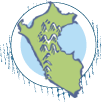

Dates & Prices
Prices From $812 / £660 per person
2025 price, per person, shared accommodation basis.
Departures any day
Single room supplement applies
Can’t find what you’re looking for? Get in Touch
+44 (0)131 378 5593
+44 (0)131 554 6025



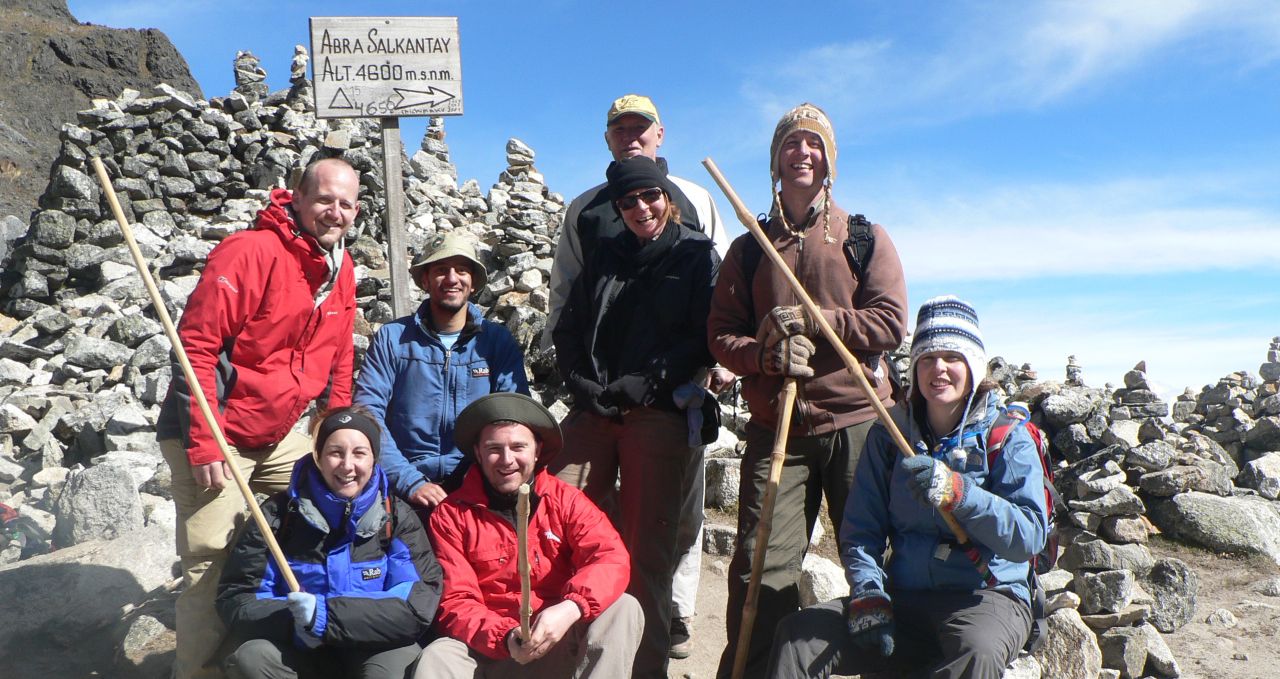
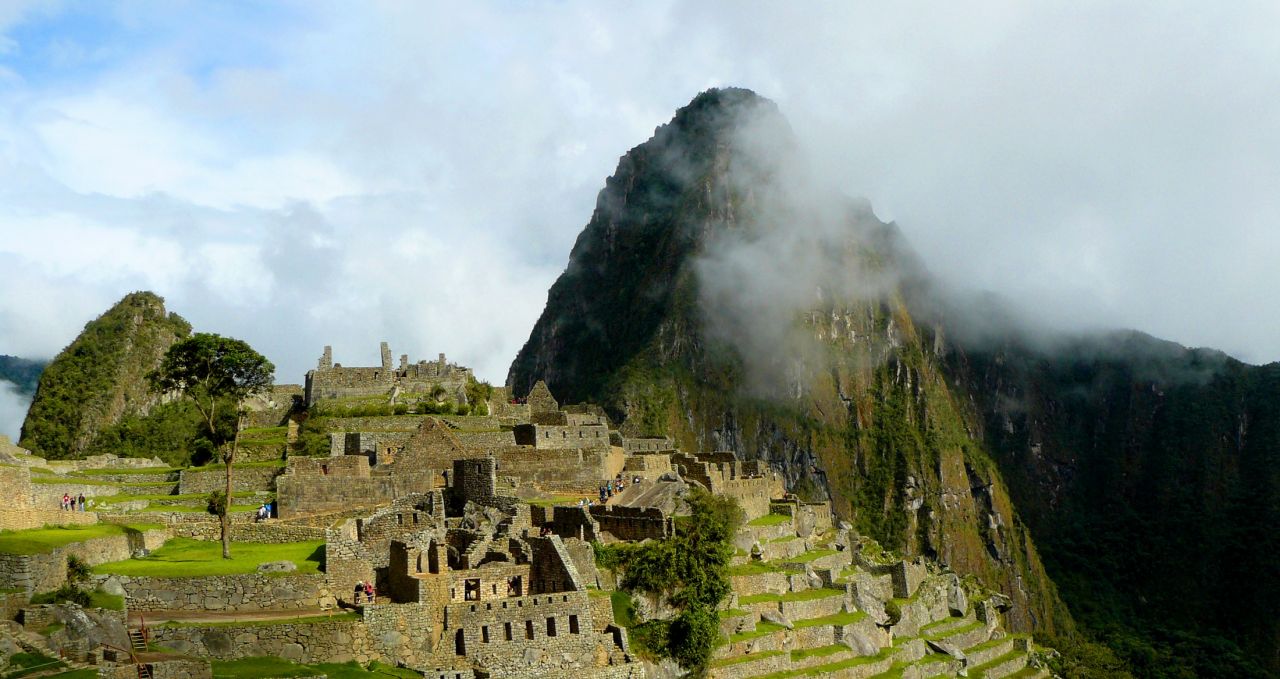
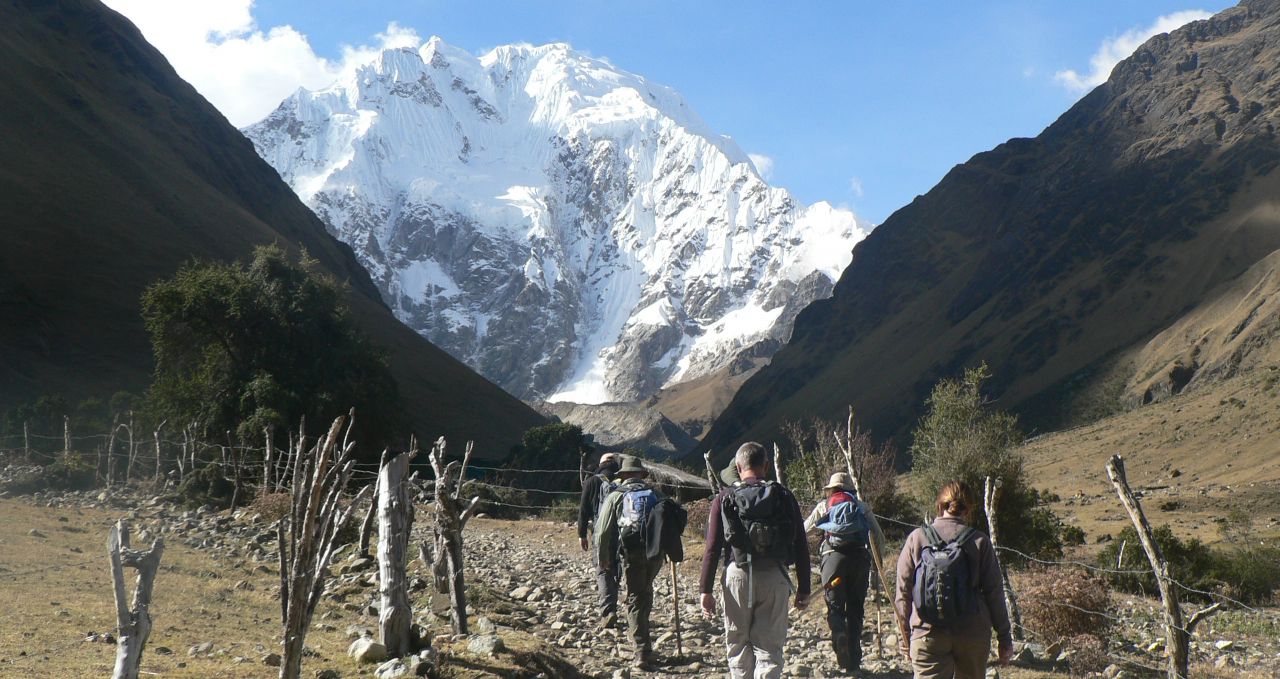
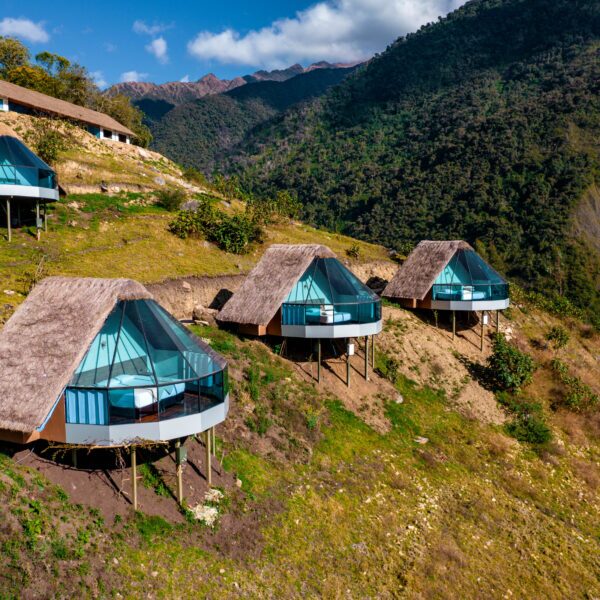
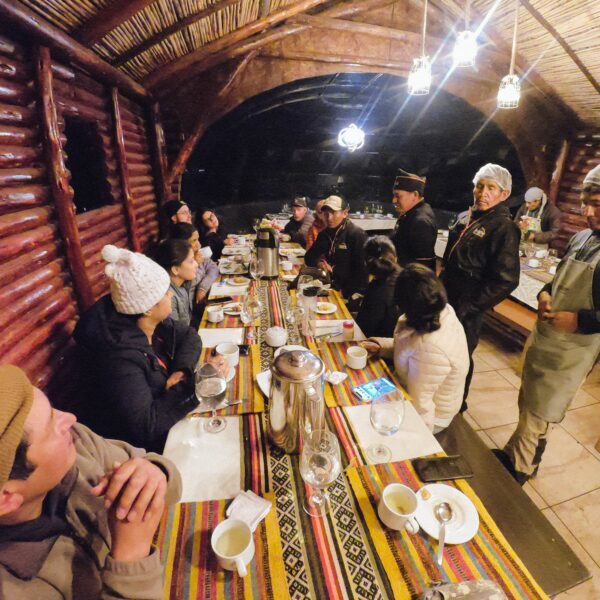
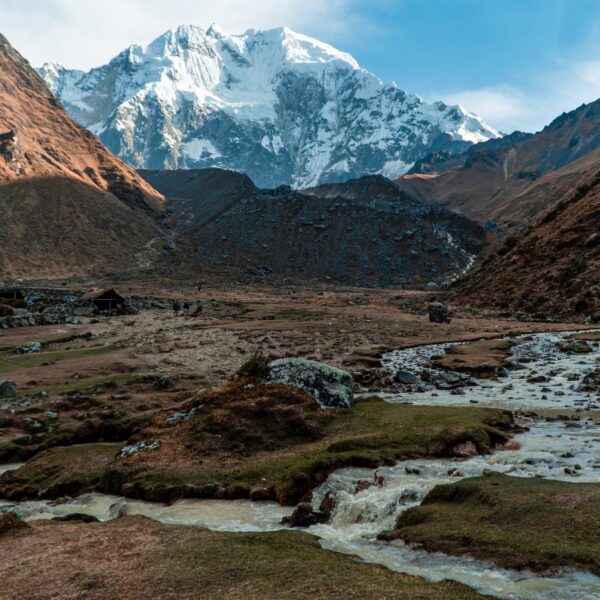
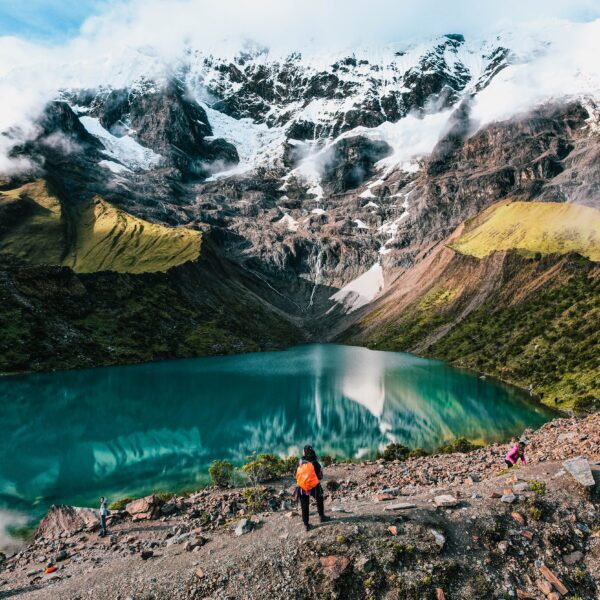
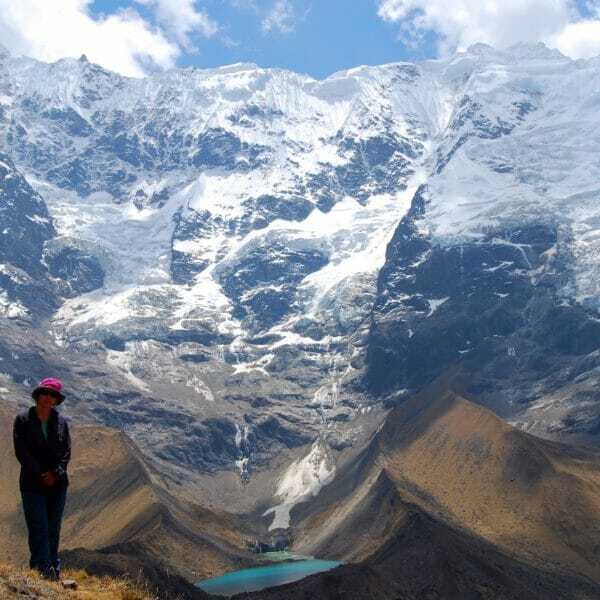
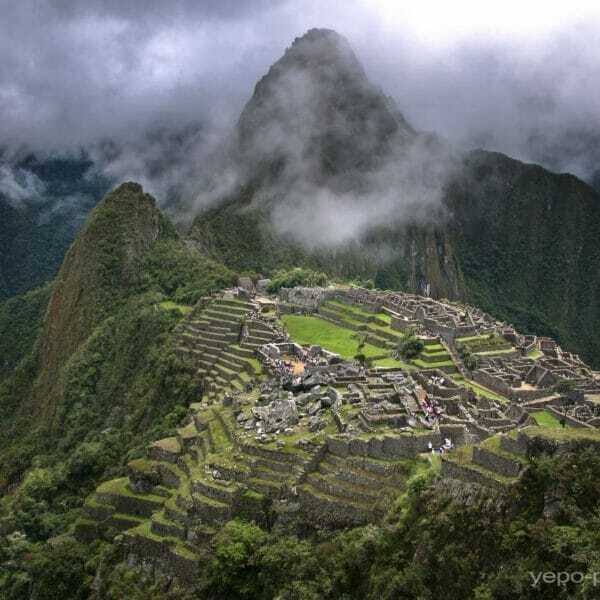
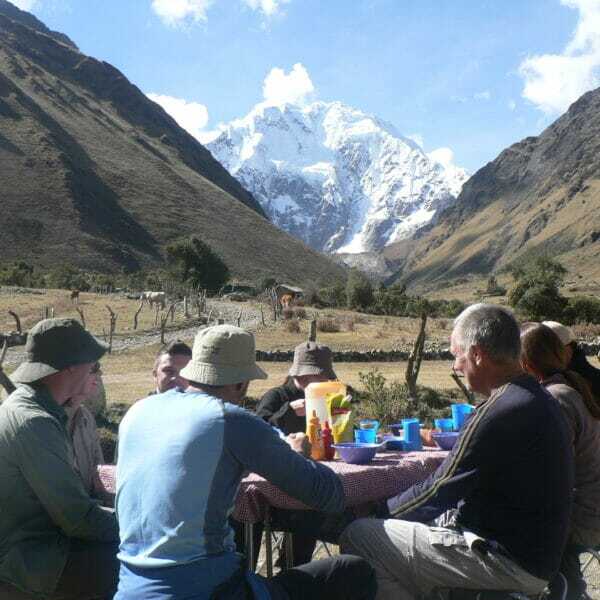
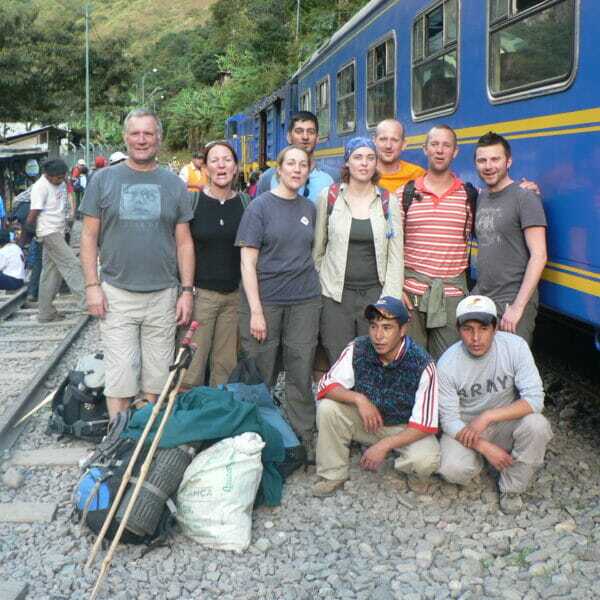
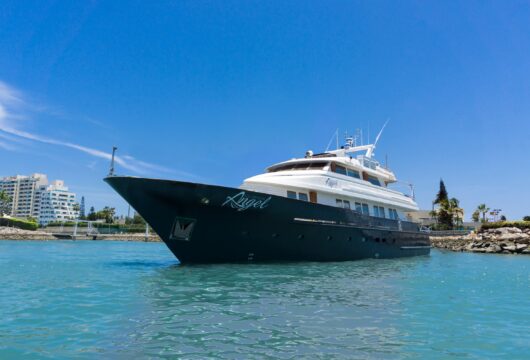
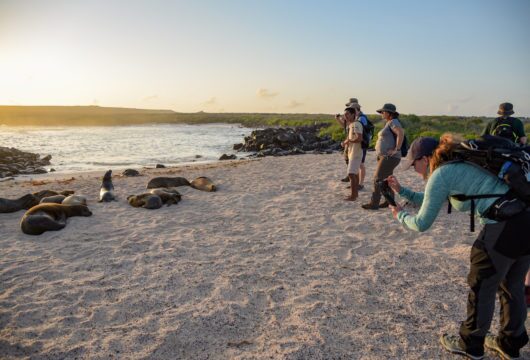
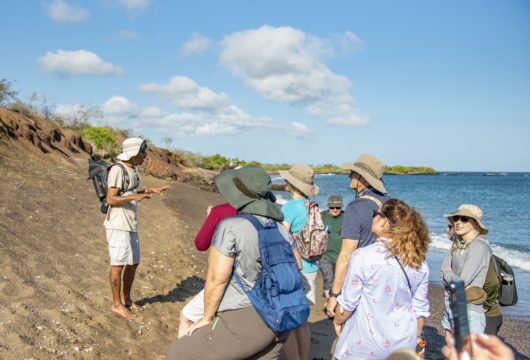
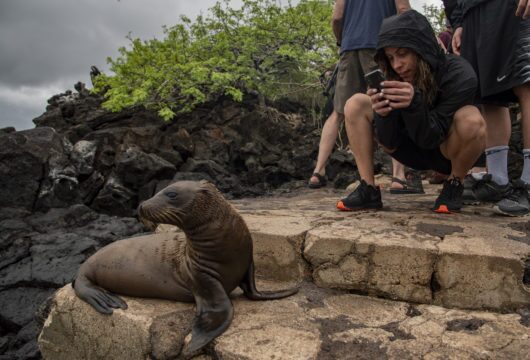
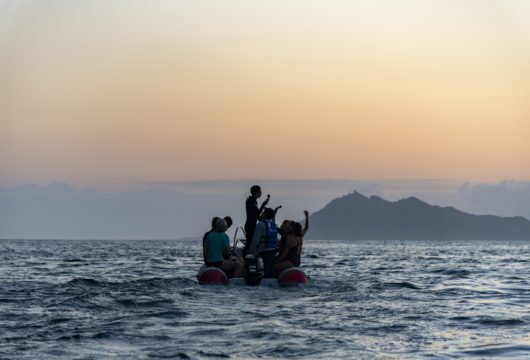
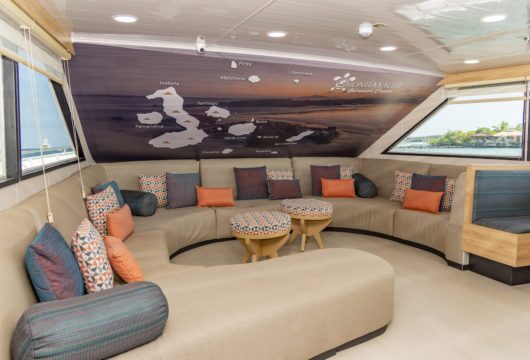
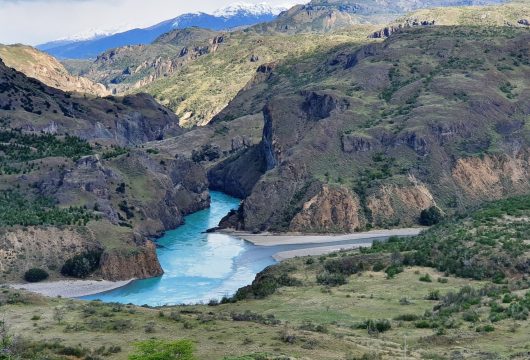
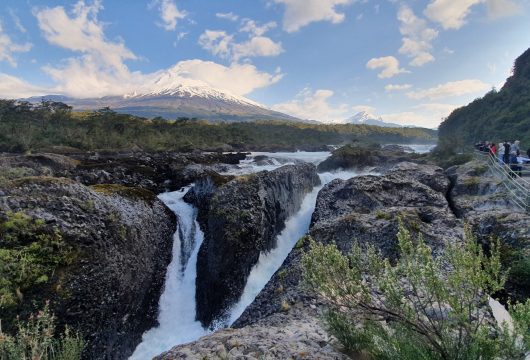
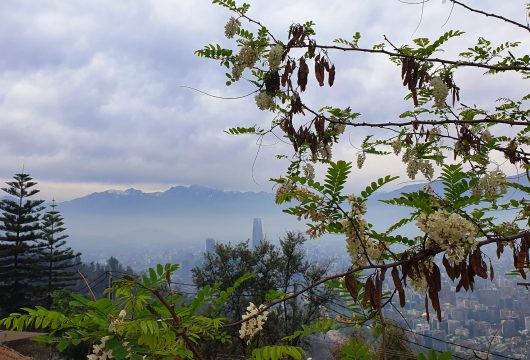
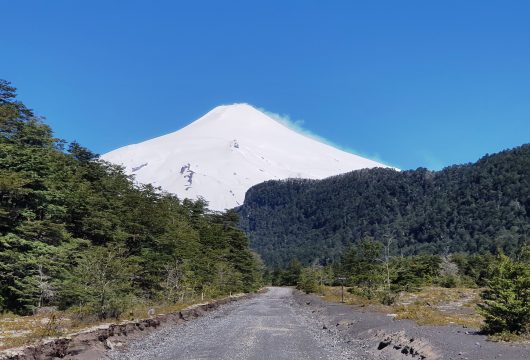
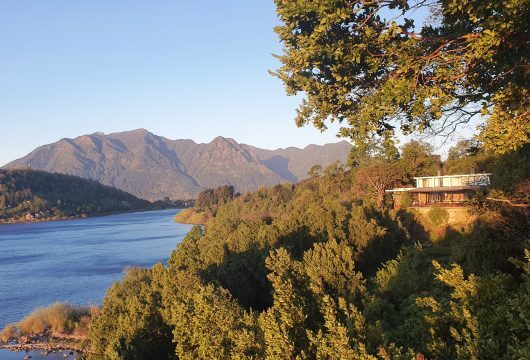
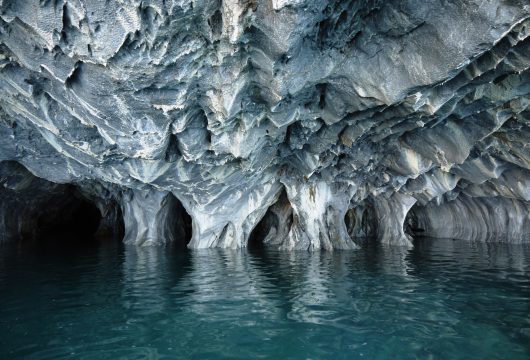
 a Group Tour
a Group Tour  a Tailor Made Tour
a Tailor Made Tour 